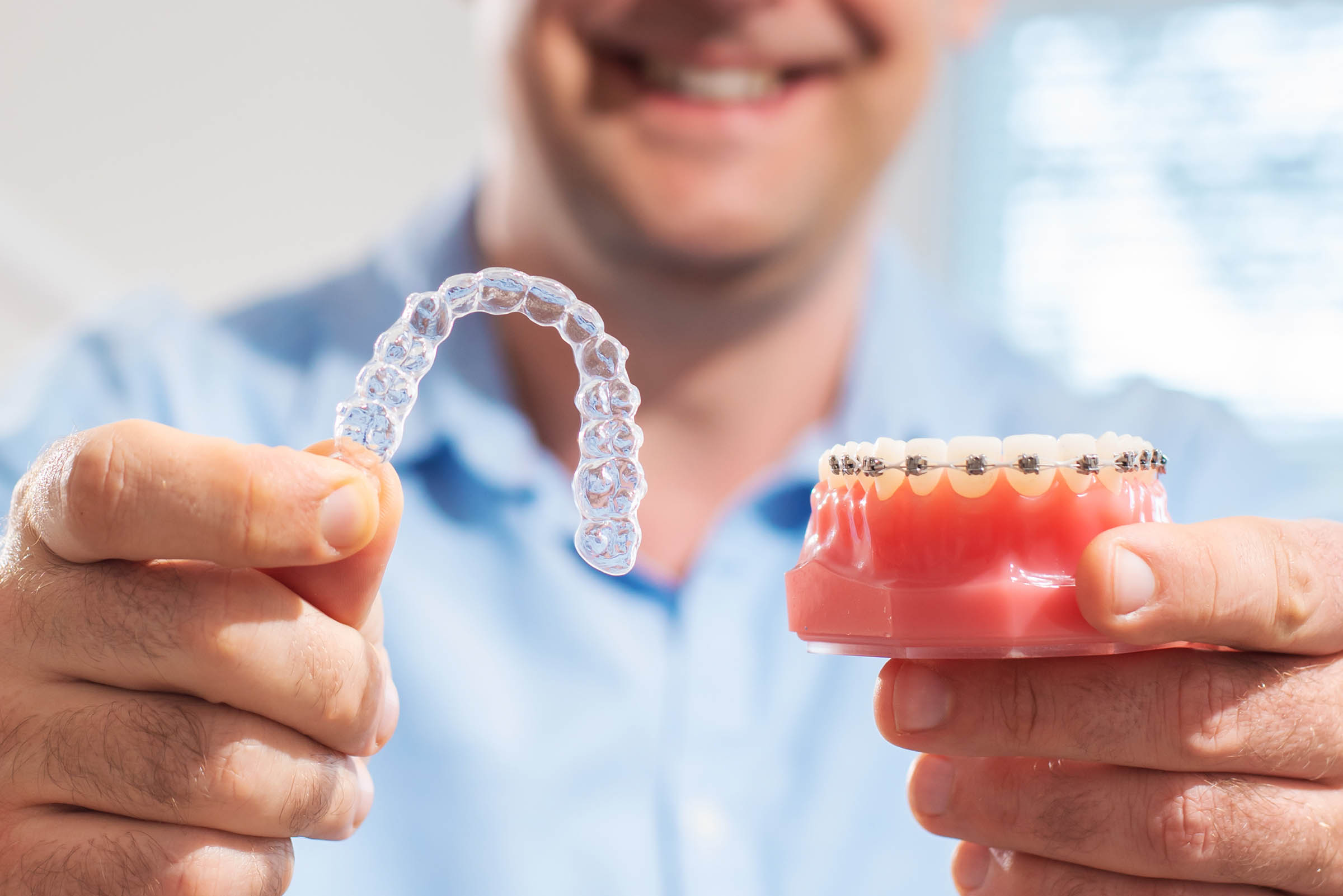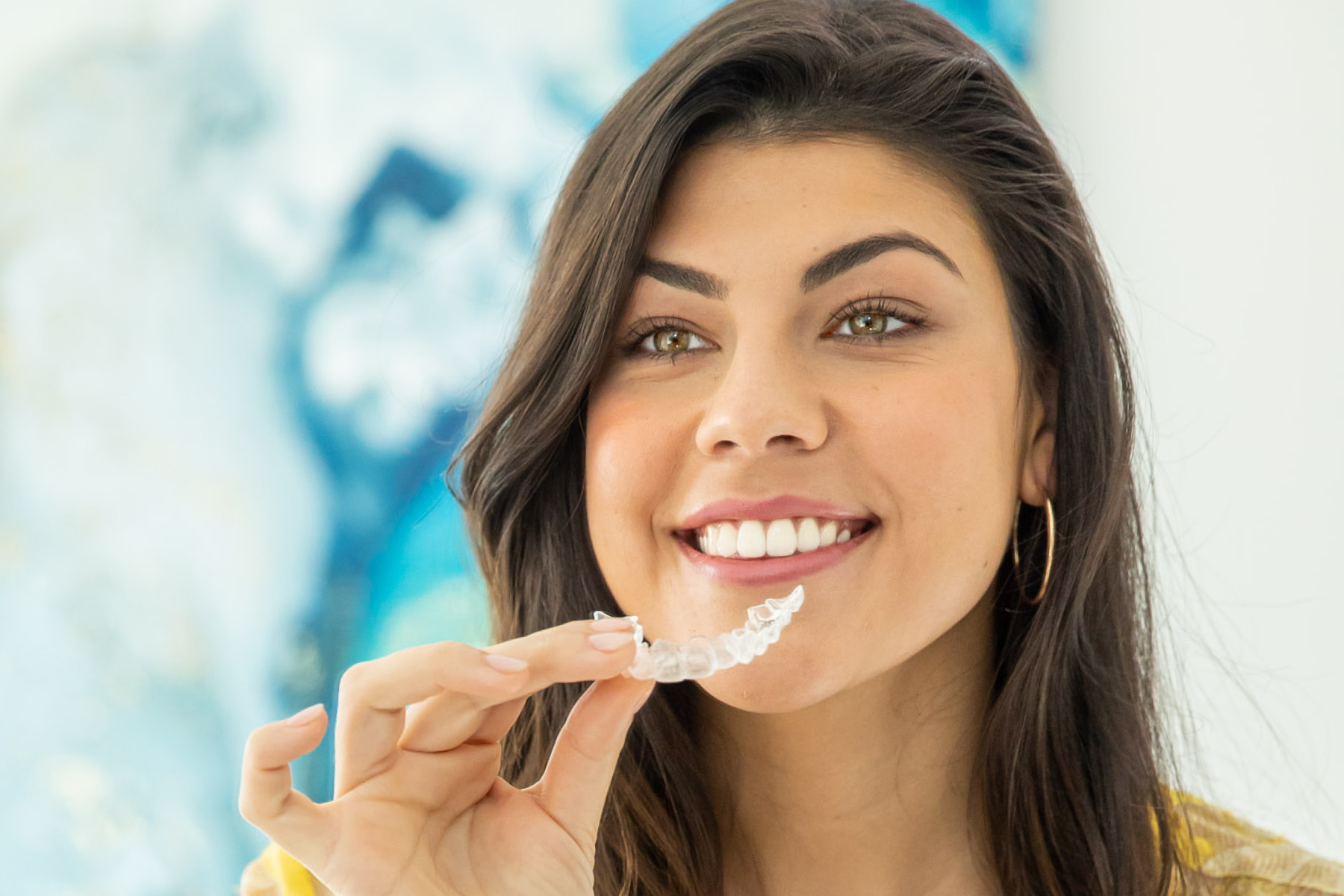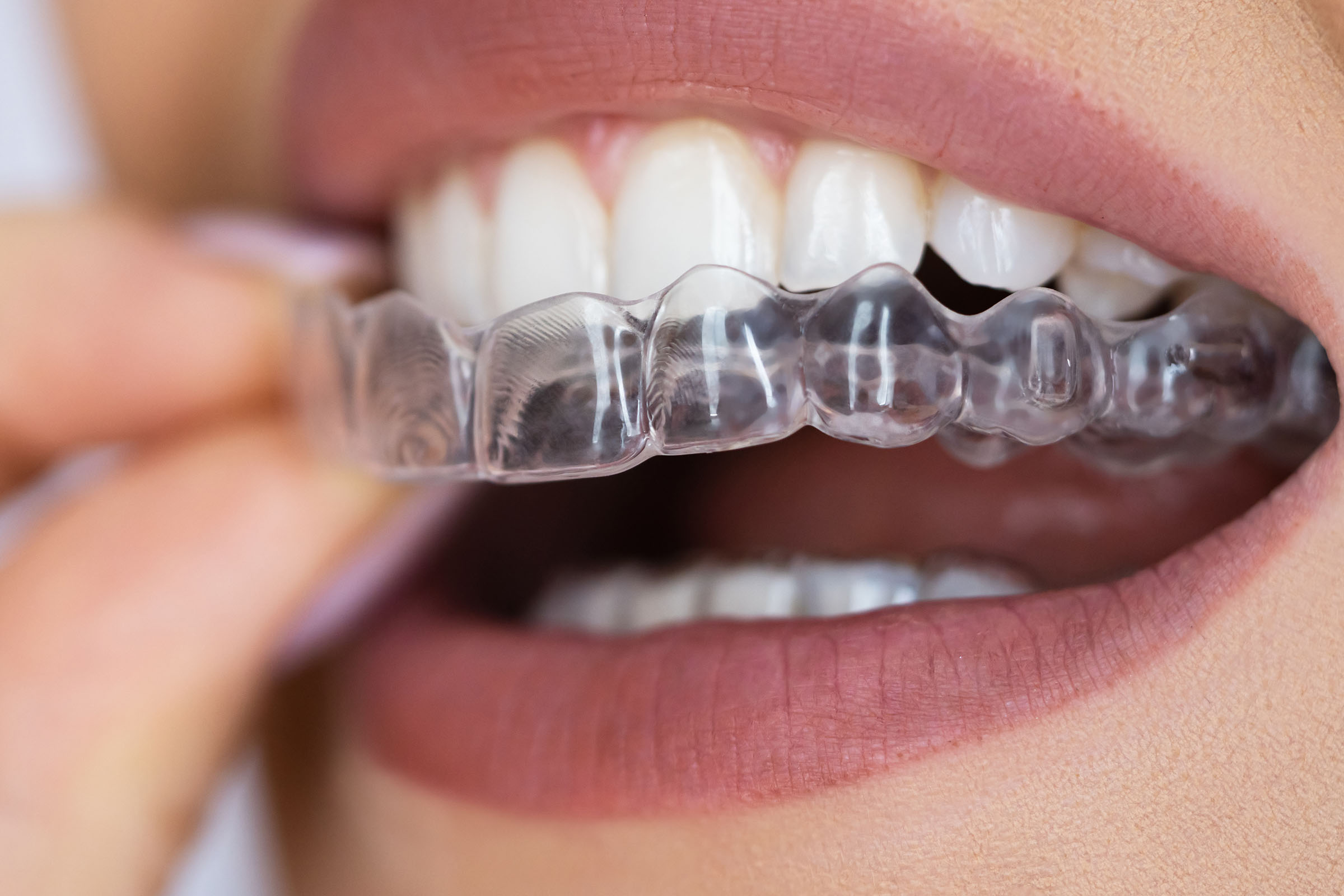Clear Retainer Treatment to Improve Your Smile!
Invisalign Orthodontics® Edmonton: Clear Retainer Treatment to Improve Your Smile!
If some of your teeth are misaligned, you have what dentists refer to as malocclusion. Malocclusion varies in severity and can present in a variety of ways. Crooked teeth are less aesthetically pleasing than straight teeth, but is that the only reason to correct their alignment?
Crooked Teeth are Hard to Clean
With more nooks and crannies to hide in, plaque bacteria can collect around the tooth and gum tissue, resulting in periodontitis (gum disease). Early warning signs include red irritated gums and bleeding when brushing or flossing.
Injury Resistance
Straight teeth are more resistant to injury than misaligned teeth. Misaligned teeth are often more exposed to stresses, and protruding teeth may be more susceptible to chips and uneven wear as a result.



Bite Mechanics
Your dentist is not just concerned with beautiful smiles. Dentists are also concerned with the mechanics of your bite. If your bite alignment is off, your teeth may perform less effectively when eating or speaking.
When assessing your teeth and gums, your dentist will be watching for:
Upper Protrusion
Often called ‘buck’ teeth, they present with front teeth that protrude outward.
Spacing or Crowding
Our teeth need enough room to erupt properly – too much crowding can prevent teeth from erupting (called an impaction). Large spacing between teeth means that the tooth has less support – leaving it more prone to damage, injury, and wear.
Misplaced Midline
The midline is the vertical meeting point between the upper front and lower front teeth, respectively. Midlines that do not align vertically are referred to as being misplaced.
Overbite
Occurs when upper front teeth overlap the lower front teeth more than they should. In some cases, an overbite can result in the bottom front teeth cutting into the roof of the mouth.
Open Bite
Refers to fully erupted teeth that meet only in the back of the mouth, resulting in spacing between upper and lower front teeth even with the jaw fully closed.
Underbite
An underbite occurs when the lower front teeth are further forward than the top front teeth when the jaw is closed.
Crossbite
Occurs when upper and lower teeth fit into the wrong side of one another. This can occur, for example, when the upper and lower dental arches are of different size.
Uneven Wear
Misalignment results in wear of one side more than the other.
Transposition
This occurs when teeth erupt in each other’s place.
Rotation
Teeth that turn in place, lean in the wrong direction, or both.
Temporomandibular Joint Disorder (TMJ)
A painful condition that affects the proper function of the upper and lower jaw. Headaches, painful chewing, and lockjaw result from TMJ.
We’ll give you a reason to smile
We’re accepting new patients and look forward to serving you, so please give us a call or request an appointment online; see you soon!
